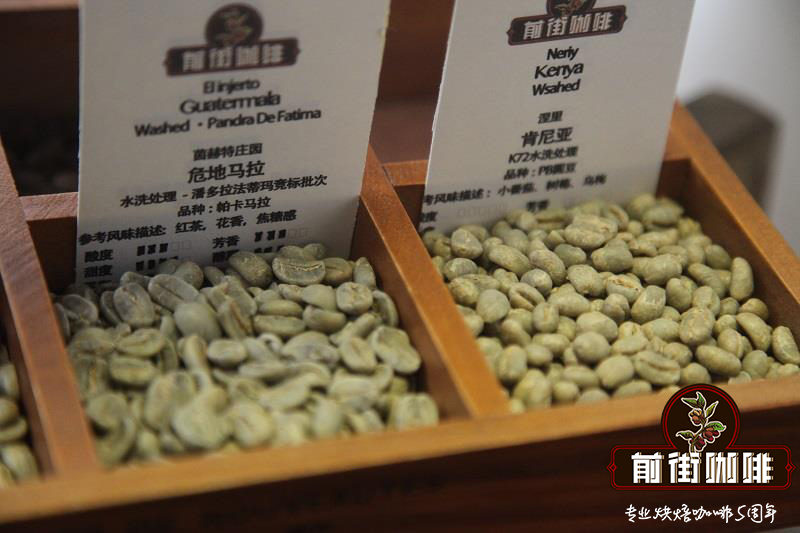World Coffee producing area | detailed description of each major coffee producing area | Top 10 coffee producing countries in the world
Have you ever wondered where the coffee you had this morning came from? The main coffee growing areas in the world are sandwiched between the Tropic of Cancer and the Tropic of Cancer. The cultivation of coffee has expanded from its birthplace Africa to the east and west, forming the so-called "bean belt".
Although Brazil is dominant in quantity (nearly 3 million metric tons), coffee-growing areas cover subtropical and equatorial regions around the world. In fact, coffee cultivation was reintroduced to Vietnam in the mid-1980s and the country is now the second largest coffee exporter.
Coffee-growing areas of America
Mexico is the ninth largest coffee exporter in the world in North America. Production is mainly concentrated in the south-central and southern parts of the country and grows particularly well in the Sokonusco coastal area of Chiapas near the Guatemalan border.
In Central and South America, coffee-growing areas such as Guatemala and Colombia have rugged terrain and rich volcanic soil, which is good for coffee growth. Colombian coffee is famous for the quality and taste of its beans and is the third largest coffee exporter in the world after Vietnam.
But the world's largest coffee supplier is Brazil-which has about 10,000 square miles of plantations, mostly in the southeastern states-a country that has maintained that title for the past 150 years.
This map is incomplete without mention of Peru, Honduras and Costa Rica. Although the output is less than 4% of Brazil's, Costa Rica has earned a reputation for some of the best coffee in central America. Most coffee production takes place on small farms.
Coffee growing area of Africa
It is said that Ethiopia is the hometown of coffee trees. A shepherd named Caldy noticed that his sheep were full of energy when they ate a little red berries. Out of curiosity, he tasted some himself and was soon convinced that he had found a valuable source of energy.
Ethiopia is the first coffee growing region in Africa (and the first consumer). Production of up to 860 million pounds, still dominated by manual cultivation and drying, is strictly regulated by coffee and tea authorities to avoid market concentration.
Interestingly, Ethiopia's neighboring Kenya was introduced to the coffee industry by Father Holy Spirit of France in the early 19th century. Although Kenya's coffee production may be considered secret, at only 51000 tons a year, it is a major player in the coffee industry and is popular all over the world.
Asian coffee growing area
Continuing our bean belt tour, let's visit Asia and its two main coffee growing areas: Vietnam and Indonesia.
Vietnam appeared on the coffee planting map in the 19th century and established its own plantation system to become an economic power. Production was interrupted by the Vietnam War, and although production was quite low, it eventually resumed production. In the mid-1980s, allowing privately owned coffee farms once again boosted the industry. Since then, Vietnam's production has been growing steadily, reaching 3 billion pounds in 2014, second only to Brazil.
But when it comes to coffee, people naturally think of some exotic names, such as Java and Sumatra. Java coffee production began in the 17th century, originally invented by the Dutch, who began to export coffee to the rest of the world. To this day, we know and use the term "a cup of java".
Indonesia produces about 6% of the world's coffee, but it provides the world with unparalleled "old coffee". Like wine and cheese, coffee beans have a unique mellow taste and reduced acidity after being preserved in a warm and humid climate for a period of time.

Important Notice :
前街咖啡 FrontStreet Coffee has moved to new addredd:
FrontStreet Coffee Address: 315,Donghua East Road,GuangZhou
Tel:020 38364473
- Prev

Coffee brewing | Chemex brewing method | how to use a Chemex pot to make coffee
Chemex has long been one of the most popular manual coffee utensils. This is a hand brewing coffee utensil with the integration of bottom pot and filter cup. Its simple elegance and complex brewing parameters attract beginners and experts from coffee lovers. Here is how to make coffee in Chemex. Prepare the brewing tool: to use Chemex to make coffee, of course you need a Chemex. There are several kinds of no.
- Next

Coffee knowledge | effect of altitude on coffee | the higher the altitude, the better the coffee?
Like wine, beer and tea, the way coffee beans grow can greatly affect the taste of the cup you end up drinking. There are many factors that affect the quality of coffee beans, but none is more important than the growth of coffee beans. To understand why altitude has such a great effect on the flavor of coffee beans, we must study plant biology in depth. Usually, the higher the altitude,
Related
- Beginners will see the "Coffee pull flower" guide!
- What is the difference between ice blog purified milk and ordinary milk coffee?
- Why is the Philippines the largest producer of crops in Liberia?
- For coffee extraction, should the fine powder be retained?
- How does extracted espresso fill pressed powder? How much strength does it take to press the powder?
- How to make jasmine cold extract coffee? Is the jasmine + latte good?
- Will this little toy really make the coffee taste better? How does Lily Drip affect coffee extraction?
- Will the action of slapping the filter cup also affect coffee extraction?
- What's the difference between powder-to-water ratio and powder-to-liquid ratio?
- What is the Ethiopian local species? What does it have to do with Heirloom native species?

